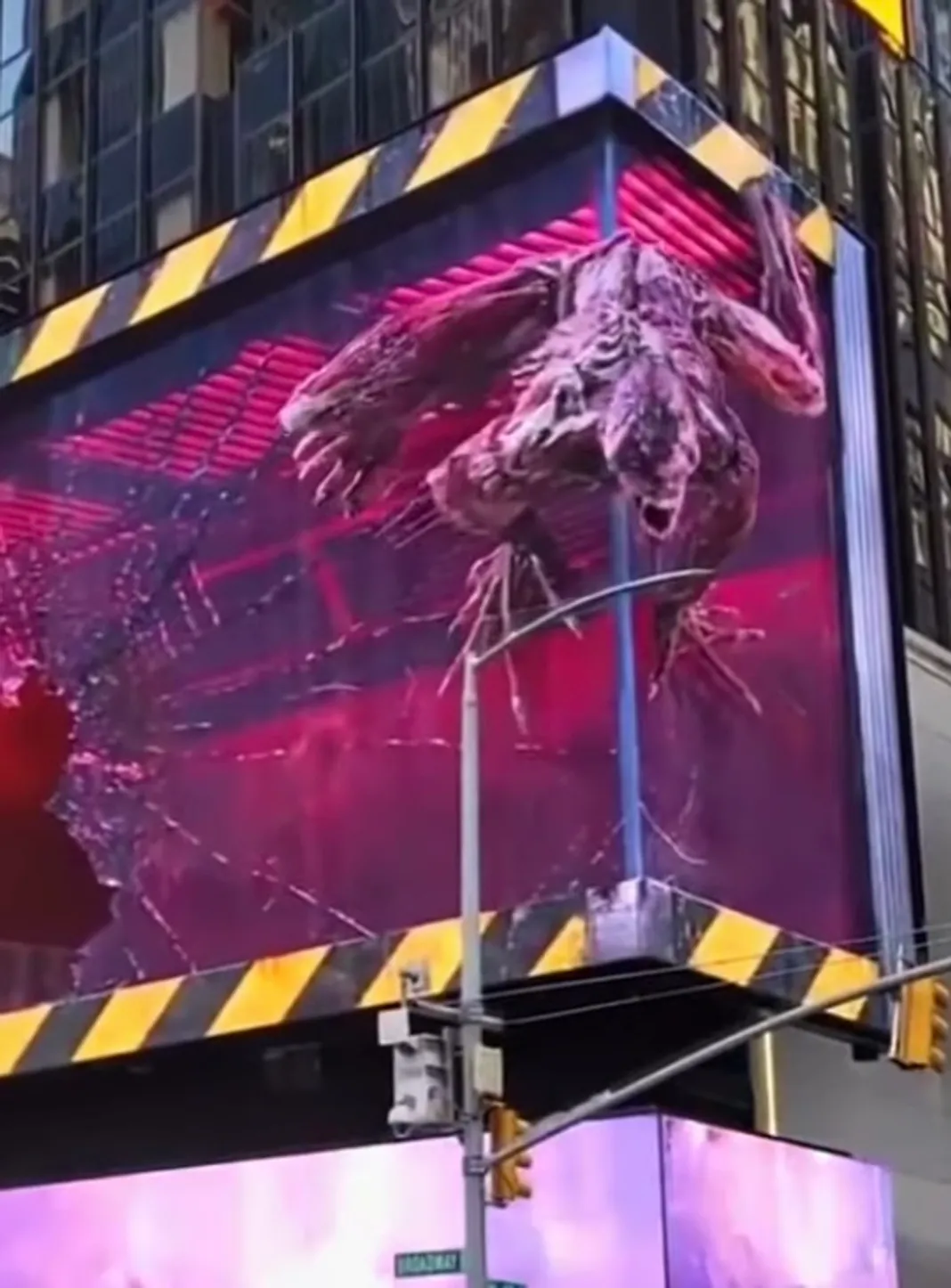Two-dimensional marketing is so over, folks. While it used to be that the next blockbuster movie or video game, or even local dentist practice would rent a big ol’ blank canvas somewhere and catch passersby with a slogan or a neat design, the world is changing — and so are advertisers.
What was once a flat experience has been transformed by anamorphic billboards, also known as 3D billboards, that essentially trick your brain into perceiving someone, or something, moving out of the blank canvas and into our world.
It’s a surprisingly effective idea when pulled off properly, and it’s getting more popular, which may lead you to wonder just how it works. Unlike when a poor magician reveals their secret, it’s fairly easy to explain but doesn’t diminish the effect.
Here’s how 3D billboards work …
Breaking the brain down
Much of the magic of a 3D billboard is derived from the same thing that creates any 3D effect, dating back to those weird blue-and-red glasses, right through to Nintendo’s 3DS and the kind of things you find in theme parks.
It all falls back to depth perception, specifically “binocular disparity.” Consider you’re lying on your side, and you close one eye. One eye is actually higher than the other, so it makes it easier to see the difference in perspective between the two.
The brain works nonstop to process images it receives and sort of “fill in the blanks” in-between, but it also works to assess the depth of things, as well as how far an object is from your eyes.
This, combined with data from what your eye sees, form the basis of a 3D model of the world around you. In fact, if you’ve ever strapped on a VR headset that maps the room, it’s a similar process–except it’s happening in real-time, all the time.
As with VR, though, it’s possible to trick the brain into forgetting where it is, if only briefly. That can throw off perspective, leading to fun instances like a really large giraffe seemingly poking its head out of a building (I think I’d struggle to get any work done if I lived opposite).
So what about 3D Billboards?
OK, so that’s how the brain works, but how do 3D billboards trigger that same effect, often for dozens of people at once? How come we’ve seen not just giraffes but monsters, panda bears, and giant Nike shoes and sunglasses popping (or floating) out of them?
It comes down to essentially using two displays, one in the foreground, and one in the background. These can be LED or OLED, but the key thing is that they’re showing the same subject from two different angles — a right eye, and a left eye angle.
That means that, when you’re looking at them, they’re letting your brain fill in the blanks but get things just a little off-kilter. While many have suggested curved displays work better, it doesn’t matter — it’s all about lining up those images just right.
Layering those images can make just about anything leap right from the display (or at least feel like it is).
Are they effective, though? Consider this — when was the last time you saw a 2D, flat billboard and told a friend about it?
Then consider something like this on your walk to work, crawling its way into your nightmares.
It seems like 3D billboards are likely here to stay, and while I know they’re almost always going to be selling me something, at least I’m getting some entertainment from them.
On an environmental side, they’re also easier to maintain than traditional billboards because they don’t require constant printing, reprinting, re-displaying, and then tearing down. While there are costs associated with running them, OLED panels can save power by not switching on pixels that are supposed to stay black, so they may cost less to run than you’d think.
From a safety standpoint, there’s an argument it’s easier to convey critical information through public announcements if things are a little more three-dimensional.
Will we end up seeing some Night City-style 3D ads projected into the air around major cities? Or ads that actually scan us as we stare gormlessly at them? Sadly, there’s always that chance. But equally, there’s the potential for interactive displays that go on to help with education, too.
It’s clear this nascent advertising medium isn’t going anywhere, and it’ll be fascinating to see how far it evolves over time.

Lloyd Coombes is an established freelance writer specializing in consumer tech and fitness. He’s also Editor-in-Chief of GGRecon, and when he’s not writing, you’ll find him at the gym.


